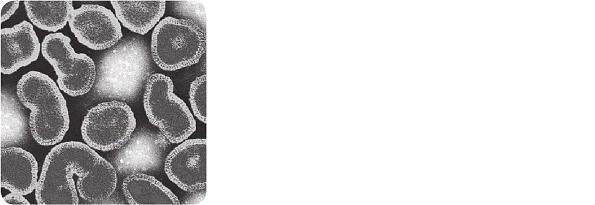TUESDAY, DAY 2
DISEASES AND AILMENTS
Germs
When most people think of germs, cold-causing microorganisms are usually the first things that spring to mind. While many of these bacteria, viruses, fungi, and protozoa do make you sick, the truth is that some of these microbes keep you healthy, too.

Bacteria are tiny, one-celled organisms shaped as rods, spheres, or spirals. Although they grow and reproduce on their own, they gather nutrients from the environment they’re in. In some cases, that means the human body; bacterial infections include strep throat, dental cavities, and pneumonia. On the flip side, good bacteria live in the intestines and aid in food digestion.
Another germ form is the virus, which is essentially a capsule containing genetic material. Unlike bacteria, viruses require a host in order to reproduce. When a virus, such as those that cause the flu or the common cold, enters the body, it hijacks host cells in the body to reproduce itself.
Some fungi also are single-celled organisms, although they’re slightly larger. Others, such as molds, yeasts, and mushrooms, live in the air, water, and soil and inside the body. Fungi are important for making some foods, such as bread, yogurt, and certain cheeses. But certain types can also lead to yeast infections and diaper rash.
The last major category of germs is protozoa, single-celled animals that thrive in moisture and can spread diseases through water. There are other germs that are sort of in between, such as mycoplasmas and rickettsias, and they cause illness, too.
Because there are so many different varieties of microbes, physicians examine blood and urine samples to determine what type of germ is causing illness in order to treat the problem accordingly. Because germs can live on surfaces for days, the most effective way of avoiding infection is to wash your hands frequently, and always after using the toilet.
ADDITIONAL FACTS
- One thousand bacteria placed next to each other would stretch across a pencil eraser.
- The antibiotic penicillin is derived from a fungus.
- In 1993, a type of protozoan infiltrated the water system in Milwaukee and eventually made some 400,000 people sick.